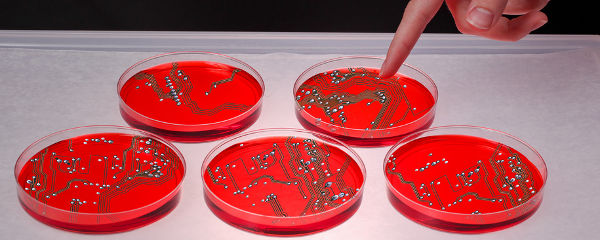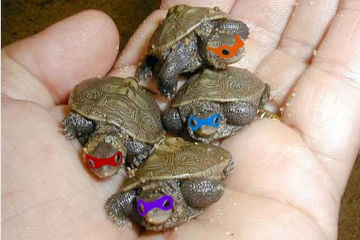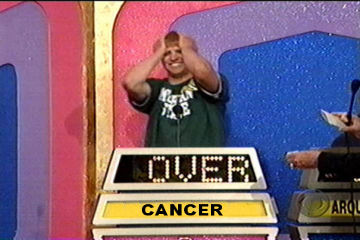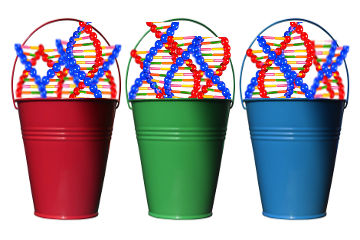What I’ve Learned:
“PCR: Putting polymerase to good use since 1983.”
The polymerase chain reaction, or PCR, is perhaps the most important laboratory technique in modern genetics. And let’s face it — there aren’t a hell of a lot of “olde-time genetics” to compare with. You don’t see prehistoric cave paintings of chromosomes, is all I’m saying.
And while “polymerase chain reaction” is a scary-sounding mouthful, you can break it down with just a little bit of background. So simple, even a cave painter could understand it.
First things first: PCR was invented back in 1983. One PM (PST), a PHD from the PAC-10, high on PCP, was driving his POS down the PCH with his PYT and poof! PCR just popped into his head.
(Of course, that’s not precisely true. Serious science doesn’t work that way.
He was actually on LSD. So… um, yeah.)
Origins aside, here’s how the polymerase chain reaction works. Under normal conditions, DNA is double-stranded — two strings of genomic sequence wound around each other. But like cheap glue, tight leather pants and bad combovers, when DNA gets hot enough, it comes apart at the seams.
In organisms, there’s a class of enzymes that uses one strand of DNA as a template and builds the complementary strand, producing a new double-stranded DNA sequence. These enzymes are called polymerases — the ‘P’ in PCR — and we wouldn’t be here without them.
(For that matter, neither would fish or philodendrons or athlete’s foot fungus. The job polymerases do, synthesizing sequence from DNA templates, is important for copying genes, making proteins and pretty much everything else a growing cell needs. Which is the only kind of cell there is, really.)
The ‘chain reaction’ part of PCR is performing this process over and over in the lab. With a little molecular juggling, scientists can snip out or “prime” most any sequence for PCR, then produce millions upon millions of copies by cycling through heating and copying, heating and copying, until they’ve made all the DNA they need.
See? Polymerase chain reaction, just like it says. Simple. Ish.
The tremendously useful thing about PCR is, it works on just about any snippet of DNA a researcher might get hot and scientifically-horny about. And each cycle doubles the amount of sequence, give or take a kilobase. You can set up a machine in the evening with some barely-there scrap of genetic fluff, and come back in the morning to bucketfuls of DNA to play with.
Well, not actual bucketfuls. Biochemical bucketfuls. Everything’s relative. But it’s plenty.
So what is PCR used for? At this point, pretty much everything that involves DNA. You name it — mutation screening, DNA fingerprinting, tissue typing, genetic mapping, invasive virus and bacteria detection, parental testing, gene sequencing, genetic mapping and more. Basically, when biochemists do anything past making coffee in the lab, it usually includes PCR.
Of course, scientists don’t actually make coffee in the lab.
Not unless they’re on LSD, anyway. So… um, yeah.







